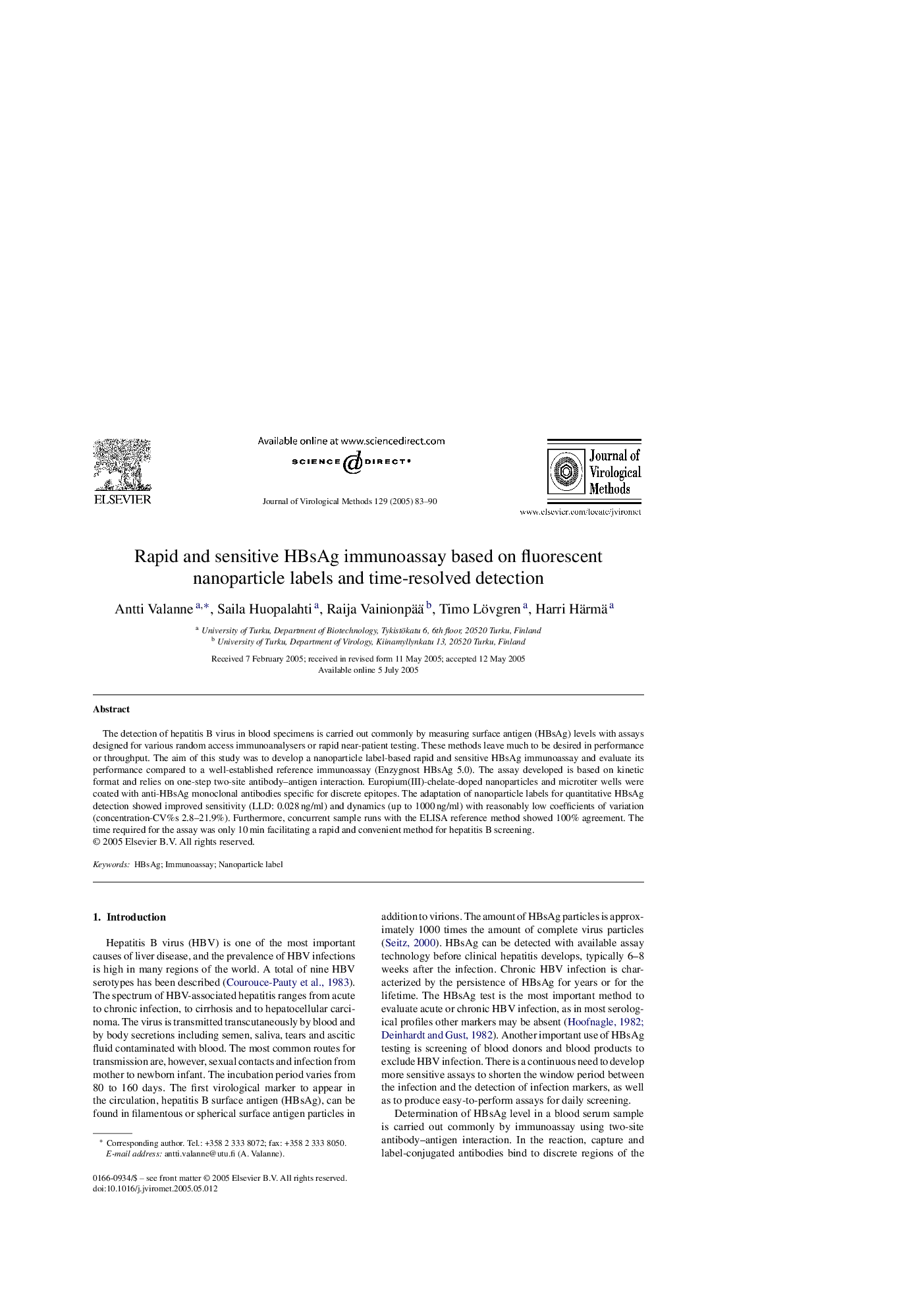| Article ID | Journal | Published Year | Pages | File Type |
|---|---|---|---|---|
| 9279484 | Journal of Virological Methods | 2005 | 8 Pages |
Abstract
The detection of hepatitis B virus in blood specimens is carried out commonly by measuring surface antigen (HBsAg) levels with assays designed for various random access immunoanalysers or rapid near-patient testing. These methods leave much to be desired in performance or throughput. The aim of this study was to develop a nanoparticle label-based rapid and sensitive HBsAg immunoassay and evaluate its performance compared to a well-established reference immunoassay (Enzygnost HBsAg 5.0). The assay developed is based on kinetic format and relies on one-step two-site antibody-antigen interaction. Europium(III)-chelate-doped nanoparticles and microtiter wells were coated with anti-HBsAg monoclonal antibodies specific for discrete epitopes. The adaptation of nanoparticle labels for quantitative HBsAg detection showed improved sensitivity (LLD: 0.028Â ng/ml) and dynamics (up to 1000Â ng/ml) with reasonably low coefficients of variation (concentration-CV%s 2.8-21.9%). Furthermore, concurrent sample runs with the ELISA reference method showed 100% agreement. The time required for the assay was only 10Â min facilitating a rapid and convenient method for hepatitis B screening.
Keywords
Related Topics
Life Sciences
Immunology and Microbiology
Virology
Authors
Antti Valanne, Saila Huopalahti, Raija Vainionpää, Timo Lövgren, Harri Härmä,
